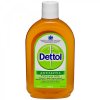The key word here is "coho". Here's what I learned when I was a commercial salmon troller many years ago:
Coho double their weight in their last ocean summer. This means they are eating machines, which means they have to digest their food super fast. So, their digestive acids are extremely strong. If you don't clean a coho in fairly short order, their digestive acids will actually eat away at their own flesh. Ever gutted a coho that sat a long time after it was bonked? Noticed the membrane that lines their abdominal cavity was dissolved, and the adjacent flesh was also starting to get dissolved? Rib bones are sticking out? Basically, the fish's digestive juices are rotting the flesh.
We called that "belly burn", and it was one of the main things that fish buyers looked for when we delivered our fish. Belly burnt fish got downgraded, and that also reflected negatively on the fisherman who delivered it.
Troll caught salmon fetch the highest price, compared to net caught, so the buyers need to maintain that market advantage. The reason that troll caught salmon get the best price, is because they are immediately bled and cleaned, before being put carefully on ice in the hold. Large ones get extra ice in their belly cavity. Salmon that are well treated on a commercial troller, with good ice, can come out of the hold 10 days later fresher than day old salmon that are treated poorly. Conversely, seine caught salmon are just dumped straight into the hold (which has no ice), without even being bled or cleaned. Coming out of the hold, they don't look so good, in fact the ones on the bottom may need to be removed by shovel. These fish do not typically make it to the fresh fish market; they go into a can.
So if you're cleaning a lot of coho, your skin will get a lot of exposure to those strong digestive juices, and get that painful, blistery rash. I got it really bad one time. We had a couple of fantastic days, and I must have cleaned a thousand or more coho a day for 2 or 3 days. I was an inexperienced deckhand, and went along with the skipper's advice to wear cotton gloves. In hindsight, he didn't have much experience either. The cotton gloves held the coho's digestive acids, even though I rinsed them out frequently. The back of my hands became a mess of oozing, blistery pain. I had to take some time off work until it healed.


